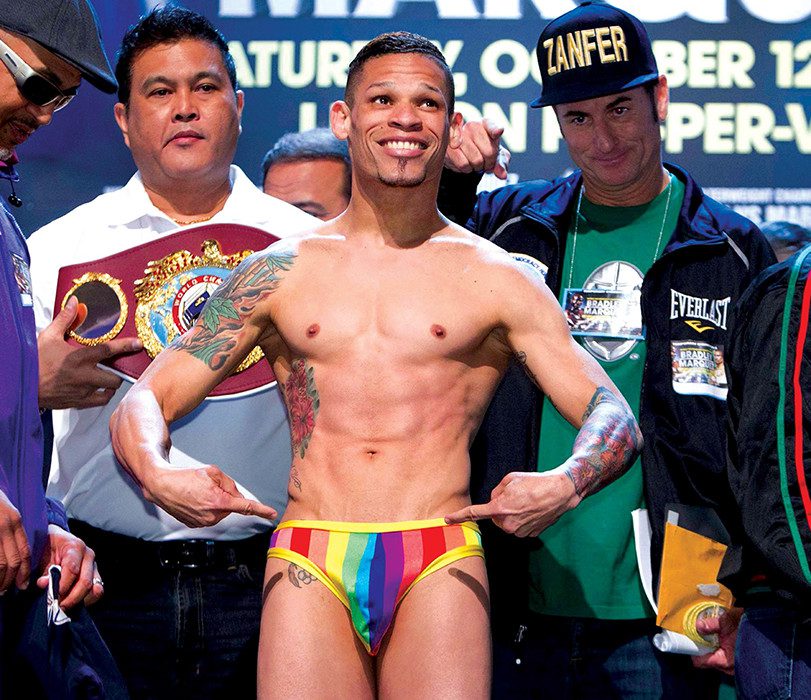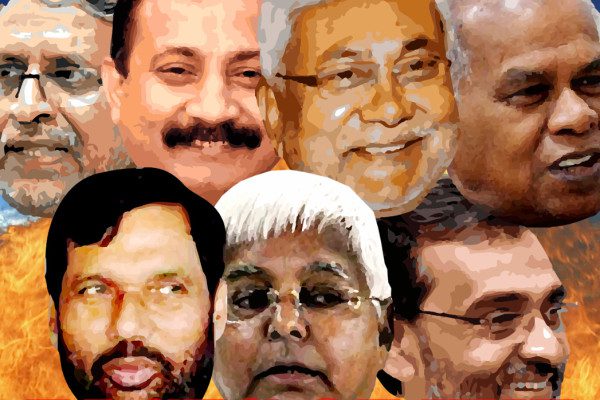The event of a boxer coming out and being somewhat accepted opens up many closed doors in sports. Will the masculinist hegemony of sports finally end? Asks Shamya Dasgupta.
“I have and will always be a proud Puerto Rican. I have always been and always will be a proud gay man.” – Orlando Cruz (October 4, 2012)
Justin Fashanu was a British footballer of Nigerian-Guyanese origin. A bloody good one, he became the first black footballer to touch the £1million transfer fee mark when he moved from Norwich City to Nottingham Forest in 1981.
He was also gay. Now that ought to have no relation to his football, but at Forest, where Brian Clough was boss, that was the reason Justin’s career reportedly stalled. Clough had a problem with reports of his homosexuality and frequent visits to gay bars. He later wrote (not admitted, mind) in his autobiography about trying to stop Justin from going to “that bloody poofs’ club”, and also that some of the other players in the team had problems playing with him.
In 1990, when he was 29, Justin came out in an interview – the first prominent British player to do so. He alleged that fellow players would often joke about his sexual orientation and that he had been subjected to a fair amount of abuse from football fans. There was a huge outcry. His brother John, also a prominent footballer, disowned Justin. Some people even claimed that Justin was an attention seeker; that he made up stories about sleeping with prominent personalities to make money from tabloids. There were reports of sex scandals and assaults and much else, and in May 1998, when he was just 37, Justin killed himself.
Not every LGBTI athlete, however, has had to face what Justin Fashanu did. Look at tennis, where Billie Jean King or Martina Navratilova or Gigi Fernandez or Hana Mandlikova or Amelie Mauresmo, or even ‘Big’ Bill Tilden (1893 to 1953) spent moderately abuse-free lives. Greg Louganis, possibly the greatest diver in history, is a hero. Today, in most big-ticket sports, ‘don’t ask, don’t tell’ is not the norm anymore.
Is the problem then mainly in men’s team sport or in sports that have a macho image?
Why is it, otherwise, news anymore, when an Orlando Cruz comes out of the closet?
The only ‘first’ about Cruz’s coming out in October last year was that he was an ‘active male boxer’. Nicola Adams had become the first openly bisexual person – male or female – to win an Olympic Games gold medal in August 2012 when she won the flyweight boxing gold, and Canadian boxer Mark Leduc had spoken about his sexual orientation all the way back in 1994, soon after his retirement. So Cruz wasn’t the first boxer to come out, or even the first male boxer to do so. Why won’t the buzz around him die down then?
Because even though Cruz took a beating at the WBO Featherweight Championship fight at the hands of Orlando Salido and is unlikely to fight at that level again, he did make a difference. In a world defined by machismo, Cruz came out prior to a title fight, then appeared for the weigh-in wearing rainbow-coloured briefs, fought in colourful shorts and then, though clearly inferior to Salido, scrapped till he dropped.
Because even though Cruz took a beating at the WBO Featherweight Championship fight at the hands of Orlando Salido and is unlikely to fight at that level again, he did make a difference. In a world defined by machismo, Cruz came out prior to a title fight, then appeared for the weigh-in wearing rainbow-coloured briefs, fought in colourful shorts and then, though clearly inferior to Salido, scrapped till he dropped.
Cruz challenged the stereotype of the effete gay man. (One baby step at a time; next we can tackle the notion that there’s something wrong with being effete.) It would appear that boxing is finally fighting its homophobia.
But where do things stand with football, the biggest sport in the world and one steeped in machismo?
In 2012, 14 years after he lost his brother, John Fashanu said, “I’m not homophobic and I never had been, but at the time I was certainly cross with my brother. I sleep at night wondering all the time, could I have done more and I keep coming up with the answer, yes I could have done more.”
Has football ‘done more’ to show that it has moved forward? If you search for ‘Blatter + Qatar + gay’ on Google, you will find that Sepp Blatter, the easy-to-criticise boss of the football world, say about the 2022 World Cup in Qatar, where homosexuality is punishable, “I’d say they (homosexual players or fans) should refrain from any sexual activities.”
Why was the tournament allotted to Qatar then?
And why were the Winter Olympic Games for 2014 awarded to Sochi in Russia, whose president, Vladimir Putin, is perceived to be anti-gay and has even signed a law that punishes the dissemination of information about homosexuality to minors, which, activists say, can be used for a general crackdown on homosexuals?
Heartbreakingly, Yelena Isinbayeva, queen of the pole vault, supported Putin on the issue – “We just live with boys with women, women with boys; we are tolerant of all existing opinions and respect all people, but they must be respectful of our laws and not promote the ideas of non-traditional orientations on the street” – and came in for more criticism than she ever had in her long and glorious career.
The problem, however, is bigger than the administrators or the stars. A report quoted in The Guardian (October 13, 2013) suggests that among football supporters, only around 7% are against the participation of gay footballers. Whether that percentage is an accurate one or not is open to debate, as all such vox-populi studies are, but even 7% in a crowd of 50,000 is still 3,500 people.
The same report also mentions a study where 26 gay male athletes in the US were interviewed in 2002, and the researcher, Eric Anderson, found sport to be “a bastion of hegemonic masculinity, heterosexism and homophobia”. In 2010, when Anderson conducted the same study again, he discovered far less prejudice. They weren’t called ‘fag’ anymore, or only occasionally, said the players.
Yes, more and more people have started coming out in most parts of the developed world. Not so in India, where, despite slow but steady northward moves, the idea of an out-there LGBTI athlete remains unthinkable. When we have had opportunity to talk of alternate sexualities, say in the case of Santhi Soundarajan and Pinki Pramanik, the tone in the media and among common people was dismaying. In neighbouring Nepal, we had the inaugural South Asia Lesbian, Gay, Bisexual and Transgender Sports Festival in October 2012, in which more than 250 sportspersons took part. Perhaps it’s time to campaign for it to travel to India next. We have our queer film festivals and pride parades. This is a logical next.
Cruz’s coming out could yet spark a change in perceptions and attitudes – of administrators and of fans. Who knows, perhaps in India too? The impact of sport is not local. Importantly, during the Cruz-Salido fight, there were no jeers directed at Cruz. That’s heartening, even if we’re not entirely where we should be yet.


